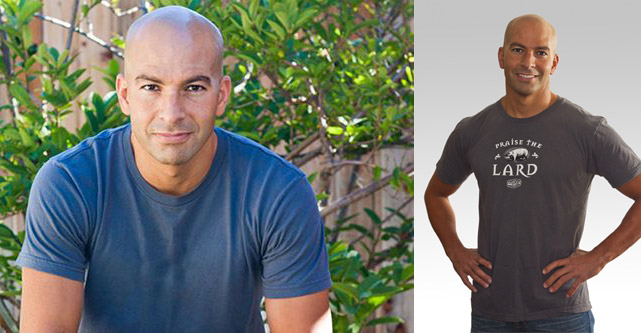Peter Attia is a physician specializing in longevity and optimal health.
This article outlines his supplement regimen, including daily supplements, sleep aids, and prescription medications.
Peter notes that what’s optimal for him is unlikely to be what’s optimal for you.
The last “major update” to this post was November 2024 – see the change log.
Peter Attia’s Supplement Stack:
| Supplements & Drugs | Dosage / Info |
|---|---|
| Taken Daily | |
| Omega-3 Fish Oil | Approx. 2.5g of EPA & 1g of DHA |
| Vitamin D | Targets 40 – 60 ng/ml blood level |
| Magnesium | Multiple types per day, up to 1 gram total |
| Folate (B9) & Vitamin B12 | 1 tablet per day |
| Vitamin B6 | 50 mg / 3x per week |
| Protein Powder | Typically 1 shake per day |
| Creatine Monohydrate | 5 grams daily |
| Green Powder – AG1 | 1 scoop in the morning |
| Probiotics | Glucose control + Akkermansia |
| Theracurmin | Dose unspecified |
| To Aid Sleep | |
| Glycine | 2 grams prior to sleep |
| Ashwagandha | 300 mg prior to sleep |
| Magnesium L-Threonate | 2 capsules prior to sleep |
| Prescription Drugs | |
| Rapamycin | Taken broadly for longevity |
| Pregabalin & Trazodone | Taken to improve sleep architecture |
| Ezetimibe, Rapatha & Bempedoic acid | Taken to reduce CV risk |
| SGLT2 Inhibitor | Lowers glucose, taken for longevity |
For a detailed breakdown of what else this article covers, see the table of contents below:

Daily Supplements
Omega-3 Fish Oil
While Peter’s supplements have varied widely between 2011 and now, one thing has stayed constant, which is the supplementation of Omega-3 fish oil.
He also recommends Omega-3 fatty acids to his patients. To quote Outlive (Chapter 15):
“Finally, unless they are eating a lot of fatty fish, filling their coffers with marine omega-3 PUFA, they [Peter’s patients] almost always need to take EPA and DHA supplements in capsule or oil form.”
In Peter’s 2023 video on supplements, he says he takes 4 capsules of “the highest EPA” version of Carlson fish oil. He estimates that he’s taking around 2 grams of EPA and 1.5 grams of DHA.
Whilst Carlson makes a high EPA supplement (link), it doesn’t contain DHA.
The closest Carlson’s supplement I can find to his above description is Carlson’s Maximum Omega 2,000, for which 4 capsules = 2.5 g of EPA and 1 g of DHA.
For interest, 4 capsules (which is what Peter said he takes) of other similar Carlson fish oil supplements equals:
| EPA per 4 capsules | DHA per 4 capsules | |
| Carlson Super Omega | 1200 mg | 800 mg |
| Carlson Elite Omega | 1600 mg | 1200 mg |

The rationale he gives for his dosage is that he aims for an omega-3 red blood cell membrane concentration of 12%.
This can be measured via a blood test called the Omega-3 Index. It’s a fairly simple test, where you prick your finger, and put a drop of blood onto the provided piece of card, and then post it back to OmegaQuant for analysis. A score of 8% is considered good, and 12% is right at the top of the range.
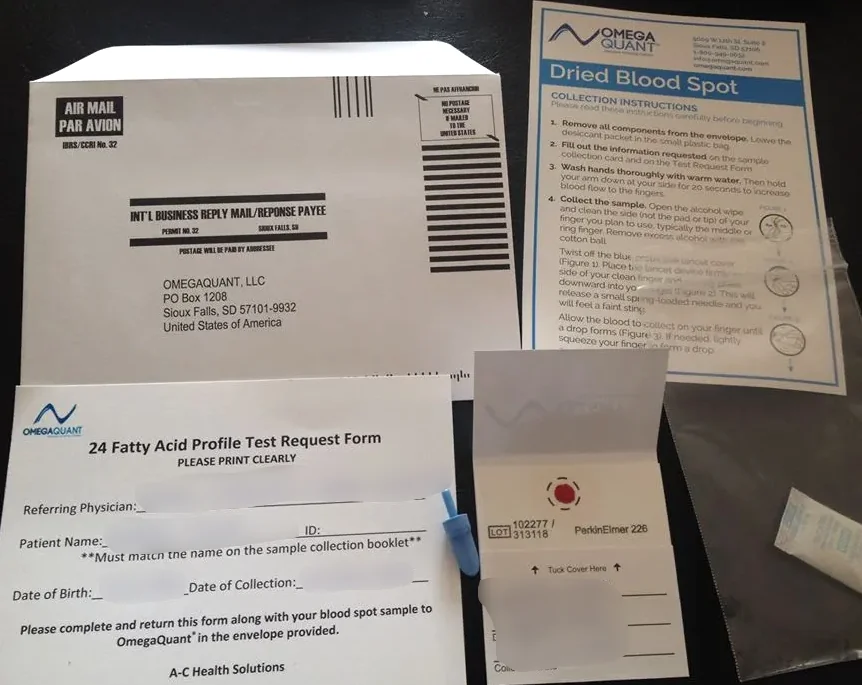
Vitamin D
Just like with other vitamins, Peter doesn’t recommend indiscriminate usage of Vitamin D.
In his interview with Joe Rogan, he cites an optimal range of vitamin D as between 40 – 60 ng/ml of 25-hydroxy vitamin D (also known as Calcifediol).
Targeting optimal ranges requires at least 2 blood tests. One prior, to understand where you are currently, and then one after a period of time supplementing, to understand the effect of the supplementation.
It can be particularly valuable to check vitamin D levels during winter if your sunlight exposure is limited.
Most recently, in Peter’s supplements video, he said he takes 5,000 IU per day.
Vitamin D from brands Peter likes:
- Thorne 1,000 IU and 5,000 IU capsules (see 20% off coupon code)
- Jarrow 1,000 IU and 5,000 IU capsules (see 20% off coupon code)

Magnesium
Peter discusses Magnesium on AMA 19, noting how important it is, and how depletion in otherwise healthy people is common.
He says he typically starts patients on ~400 mg of Magnesium Oxide or Citrate if they haven’t been taking any.
And says he personally takes:
- 400 – 500 mg of Magnesium Oxide or Citrate
- 2 tablets of Magnesium Chloride (aka SlowMag) (143 mg)
- 2 capsules of Magnesium L-Threonate before bed (~96 mg)
Peter categorizes magnesium into 3 broad categories:
1) Poorly Absorbed
These are Oxide and Citrate forms.
He notes that they can help with bowel function, and are one of the first things people can try if their bowel function has slowed down.
These form the base of Peter’s daily magnesium intake.
Brands of Magnesium Oxide and Citrate include:
- Carlson – Magnesium Oxide – 350 mg capsules (see 20% off coupon code)
- NOW – Magnesium Citrate – 200 mg capsules (see 20% off coupon code)
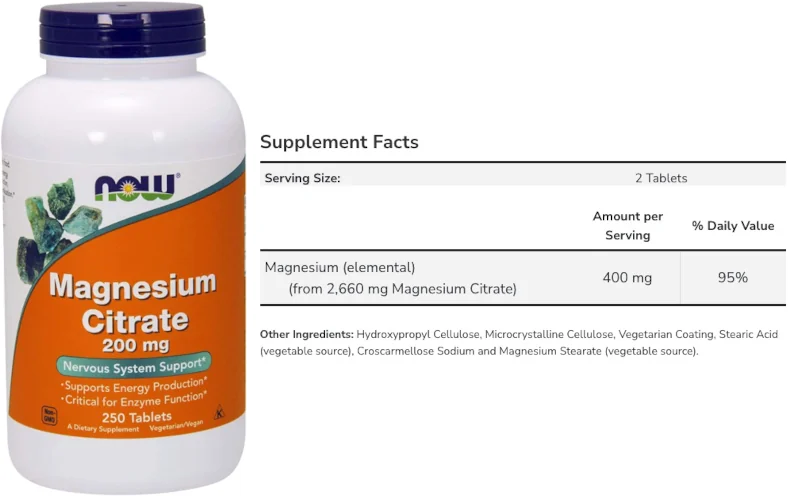
2) Well Absorbed
Peter describes Magnesium Chloride as a well-absorbed form of Magnesium.
He takes it in a form called SlowMag, which is designed for slow-release and to remove stomach upset sometimes experienced with magnesium supplementation.
They use an enteric coating, such that it breaks down in the small intestine, rather than in the stomach.
Peter takes 2 capsules daily, containing 143 mg total of elemental Magnesium.
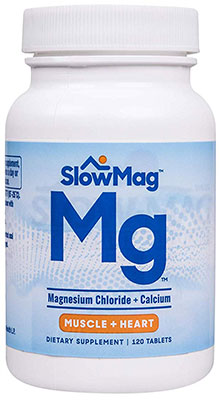
3) Absorbed by the Brain
Peter likes Magnesium bound to a compound called L-Threonate, which he says facilitates magnesium to cross the blood-brain barrier.
He takes 2 capsules of L-Threonate before bed, which contains ~96 mg of elemental Magnesium.
Whilst different brands sell Magnesium L-Threonate, the raw ingredients are provided to them by a company called Magtein which owns a patent for the product. Thus whether you buy Jarrow’s MagMind or others – the raw ingredients all come from the same source.
Brands of L-Threonate include:
- Jarrow – Magnesium L-Threonate – 90 x 144 mg servings (see 20% off coupon code)
- NOW – Magnesium L-Threonate – 90 x 144 mg servings (see 20% off coupon code)

Folate (B9) & B12
Peter takes methylated versions of folate (B9) and B12 primarily to keep his homocysteine levels below 9 mcmol/L (discussed in his supplements video).
Homocysteine is an amino acid that needs B vitamins in order to be converted into other compounds the body needs. High homocysteine levels can sometimes be due to insufficient B vitamins, and over time, can raise the risk of cardiovascular disease1Homocysteine and Cardiovascular Disease | Refsum, H. et al. | 1998 | Annual Review of Medicine.
In his 2023 video on supplements, he says he uses Jarrow’s Folate + B12 supplement – and takes 1 tablet per day. Jarrow does 2 versions; “extra strength” and “ultra strength”. He takes the lower of the two, which is “extra strength”.
It contains a small amount of B6, which he then tops up via an additional B6 supplement.
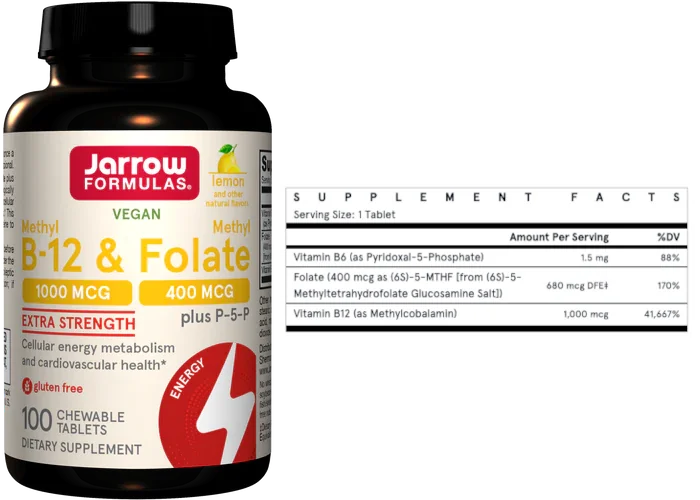
Vitamin B6
In Peter’s 2023 video on supplements, he notes taking 50 mg of vitamin B6 3x per week. Similar to the folate and B12, he takes it primarily to keep his homocysteine low.
Examples of B6 products in 50 mg dose include:
- Solaray – Vitamin B6 – 50 mg per capsule
- Solgar – Vitamin B6 – 50 mg per tablet
Protein Powder
In the post on Peter’s diet, we saw he is taking a protein shake daily, to help him reach his protein macro goals.
In AMA 40 Peter discusses his preferences in terms of protein powder. He looks for:
- High-quality whey protein powder isolate, which is low in fat and carbohydrates.
- Aiming for around 1-2 grams of fat and 4-5 grams of carbs per 25g serving.
- No individual amino acids as ingredients, to avoid nitrogen spiking.
He usually combines 25 g of flavorless with 25 g of flavored (sweetened with sucralose) to give it flavor without being overly sweet.
What does isolate mean in the context of whey protein powder? Whey protein powder comes in 2 forms; concentrate and isolate.
The difference is that isolate has been processed to remove almost all of the fat and lactulose (carbohydrate), making it lower in fat and carbohydrate than the concentrated form.
However, in practice, both products *can* be quite similar in terms of fat and carbs, so the best thing is to read the nutrition labels and check the specific quantity of fat and carbohydrates.
According to Kevin Rose on The Random Show, Peter Attia’s current favorite protein powder is a brand named Promix (see 1:48:23 on YouTube where they discuss this).
Promix apparently make very pure, high quality grass fed protein powder, which includes a whey protein isolate version. For 10% off Promix orders, see this discount code.
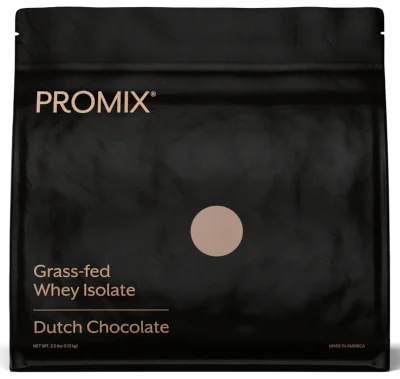
Other examples of protein powders that are low in fat + carbs and contain sucralose (if flavored):
- Dymatize – 100% Whey Protein Isolate – Flavoured (see 20% off coupon code)
- California Gold Nutrition – 100% Whey Protein Powder – Unflavored (see 20% off coupon code)
- NOW Foods – 100% Whey Protein Isolate – Unflavored (see 20% off coupon code)
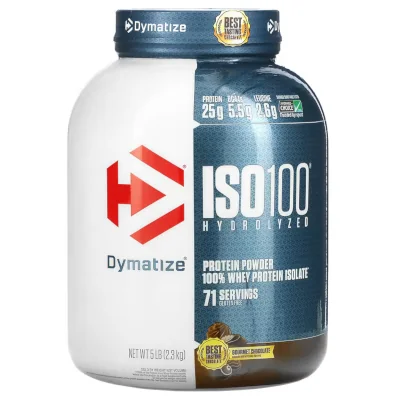
Creatine Monohydrate
During Peter’s interview on the Modern Wisdom podcast, he mentioned creatine monohydrates as an important supplement for people to take.

Peter takes 5 grams daily during a workout, mixing it in with electrolytes and water.
The only time he suggests that people dial down their creatine intake is if it causes them stomach upset.
Examples of reputable brands include:
| Product | Quantity | Price | Cost per 5g |
| Momentous – Creatine | 450 grams | $31 with coupon | $0.34 |
| Double Wood – Creatine | 500 grams | $24 with coupon | $0.24 |
| NOW – Creatine | 500 grams | $22 | $0.22 |
| NOW – Creatine (Capsules) | 120 x 750 mg | $11 | $0.63 |
| Life Extension – Creatine (Capsules) | 120 * 500 mg | $13 | $1.05 |
Green Powder – AG1
Peter discusses Athletic Greens’ AG1 product on AMA 36 at around 1hr 11mins.
He makes several points, including:
- He’s an investor in Athletic Greens, the company.
- He likes the product AG1, in part, because he gets to see “exactly how the sausage is made”, and he can speak to the quality of the product and the ingredients that go into it.
- Noting that it’s expensive because it costs an unbelievable amount to make.
- He takes a scoop of AG1 daily, regardless of what else he is eating.
- If he’s hunting, or doing something particularly energetically demanding, he will make an effort to take it twice per day.

Probiotics
Peter takes 3 products by a company called Pendulum, specifically:
- Glucose Control (probiotic)
- Akkermansia (probiotic)
- Polyphenol Booster (not a probiotic)
Doses: Serving size on the bottle
Timing: He mentioned taking Glucose control in the morning, possibly he takes the other two at the same time, but I haven’t seen this confirmed.
Next, we’ll look at these one by one:
Glucose Control
Pendulum’s Glucose Control is a blend of bacteria that was found in a clinical trial (link) to:
- Reduce the average level of glycated hemoglobin (A1C), a long-term measure of average blood glucose levels, compared to placebo.
- Lower the post-prandial (after-meal) glucose spike compared to a placebo.
These results suggest that the bacteria may help control glucose levels.
(For 20% off monthly Pendulum subscriptions, use this discount code)
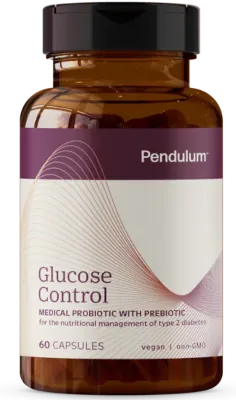
Akkermansia
Pendulum’s Akkermansia product is named after the bacteria Akkermansia muciniphila. In-vitro (link) and animal studies (link) suggest it may increase the secretion of GLP-1 by intestinal cells.
Increasing GLP-1 can improve blood glucose control and decrease appetite.
Drugs such as Ozempic (semaglutide) have a similar effect by mimicking GLP-1.
However, at this stage, it’s not possible to compare akkermansia bacteria to GLP-1 agonists like Ozempic, as they haven’t been tested side-by-side.
(For 20% off monthly Pendulum subscriptions, use this discount code)
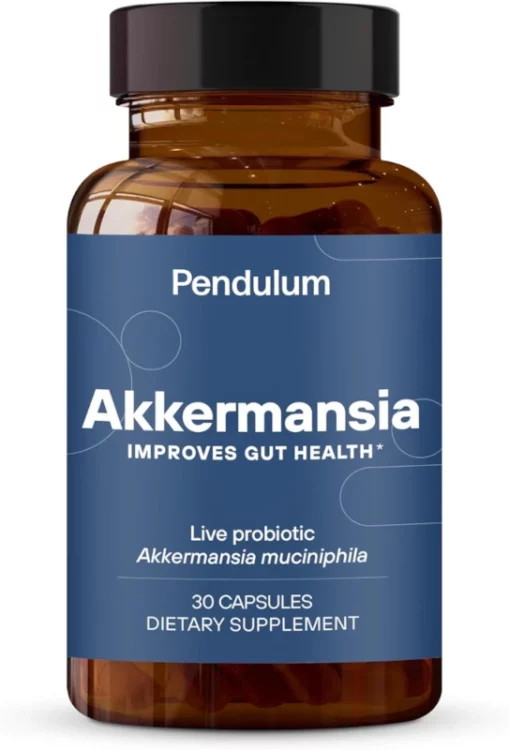
Polyphenol Booster
Unlike the previous two Pendulum products, Polyphenol Booster does not contain any probiotics.
Instead, it’s designed to provide a concentrated form of polyphenols. Specifically, it contains:
- Pomegranate extract
- Grape Seed extract
- Green Tea extract
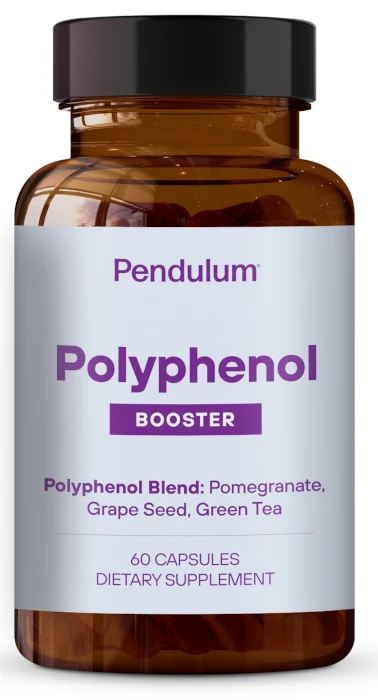
Sleep Supplements
In AMA 42, at 37m 30s, Peter discusses taking 3 supplements regularly for sleep:
- Glycine – 2 grams before bed
- Ashwagandha – 300 mg before bed
- Magnesium L-Threonate – 2 capsules before bed
Below we look at them in more detail:

Glycine
Peter describes Glycine as an inhibitory neurotransmitter in the brain stem and spinal cord.
In taking Glycine, the hope is that it’s calming the central nervous system.
He cites a human study, which used 3 grams of Glycine (1 gram more than he takes), and it found:
- Glycine shortens latency so that people fall asleep quicker
- Glycine reduced the latency to slow-wave sleep
- Glycine didn’t alter sleep architecture anywhere else
Peter notes that patients who are taking clozapine shouldn’t be taking glycine.
In his 2023 video on supplements, he mentions taking Thorne’s Glycine (500 mg per capsule)
Other examples of reputable brands include:
- Double Wood – Glycine – 500 mg capsules (see 15% off coupon code)
- Life Extension – Glycine – 1,000 mg (1g) capsules (see 20% off coupon code)
- NOW – Glycine – 1,000 mg (1g) capsules (see 20% off coupon code)
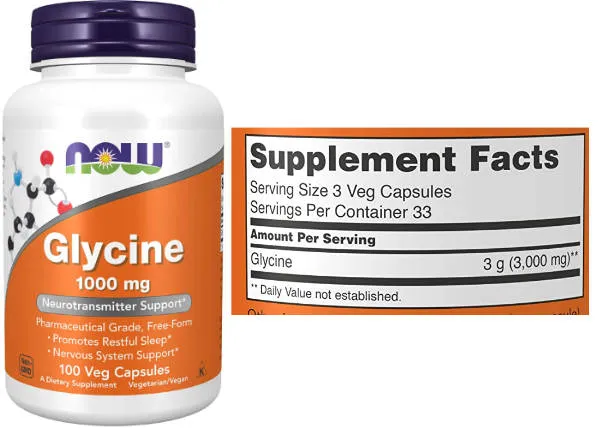
Ashwagandha
Peter takes 300 mg of Ashwagandha in the evening to help improve the quality of his sleep
Peter says that the data in humans is “not overwhelmingly robust”, but he has found objective and subjective benefits when he takes it.
He describes Ashwagandha as a milder version of Phosphatidylserine (which he takes occasionally and sparingly).
Ashwagandha reduces activation of the hypothalamic-pituitary-adrenal axis, which reduces cortisol.
Studies include:
- An RCT (n = 58), found that 300 mg of ashwagandha 2x per day for 10 weeks shortened sleep onset latency, improved sleep efficiency and sleep quality
- An RCT (n = 58) that used either 250 or 600 mg daily ashwagandha for its anxiolytic effects found that both doses reduced serum cortisol and improved subjective sleep quality based on a 7-point sleep scale.
He notes a number of contraindications, including: during pregnancy and breast-feeding, pre-surgery, patients with stomach ulcers, autoimmune conditions, and thyroid disorders.
As is usual, if you’re on medications, it’s important to consult with a doctor to avoid negative drug interactions.
Brand and dose: Peter mentioned in his October 2023 interview (see 2hr 38m) he’s taking 300 mg of Solgar’s Ashwagandha.
Below are some useful notes on choosing an Ashwagandha product:
When it comes to choosing an Ashwagandha product, there are a few things worth being aware of:
- Plant-based compounds, as opposed to synthetic compounds, come with natural variability. Differences in the soil type, rainfall, time of year, amount of sunlight, etc. all influence the plant’s internal composition. Therefore, if you want to achieve reproducible and reliable results from consuming a plant, you ideally want to ensure they’re as similar as possible each time.
- One way to get closer to achieving this is through “standardized extracts”. These attempt to isolate the (main) active compound(s) within a plant, and then ensure that the extract always has the same percentage of these compounds in it.
- This isn’t an exact science, because for some plants there are many active compounds, thus making perfect standardization impossible. However, it’s a start.
- For this reason, many clinical studies of plant compounds choose standardized extracts, to help make the results reproducible.
For Ashwagandha, the two most studied extracts are KSM-66 and Sensoril, with Shoden coming in #3.
| KSM-66 | Sensoril | Shoden | |
| Extract Type | Root only | Root + leaves | Root + leaves |
| Withanolide concentration | 5% | ≥ 10% | 35% |
| Approx no. of quality human studies* | 11 | 11 | 2 |
| Trademark Owner | Ixoreal | Natreon | Arjuna |
* The source for the human studies comes from this meta-analysis
Further notes on KSM-66 / Sensoril / Shoden:
- KSM-66 – uses only the root and is standardized to 5% withanolide concentration. The trademark owners say using solely the root is the traditional way ashwagandha is used. They warn that using its leaves risks an increase in Withaferin A, which they say is toxic. That might be an oversimplification, or at least, very dose and use-dependent as there are studies pointing towards anti-cancer properties (also this and this).
- Sensoril – Uses a combination of the root plus leaves, and standardizes on a minimum of 10% withanolide concentration. Their products apparently have less than 0.5% Withaferin A. Sensoril has a comparable amount of high-quality human studies to KSM-66.
- Shoden – uses the root + leaves to create a 35% withanolide concentration – which is much higher than the other two.
The Solgar product doesn’t appear to use either of the more studied and popular extracts, such as KSM-66 or Sensoril. Below are some examples that do:
- Jarrow – Ashwagandha (KSM-66) – 300 mg per capsule (see 20% off coupon code)
- Natural Factors – Ashwagandha (KSM-66) – 600 mg per capsule (see 20% off coupon code)
- Life Extension – Ashwagandha (Sensoril) – 125 mg per capsule (see 20% off coupon code)
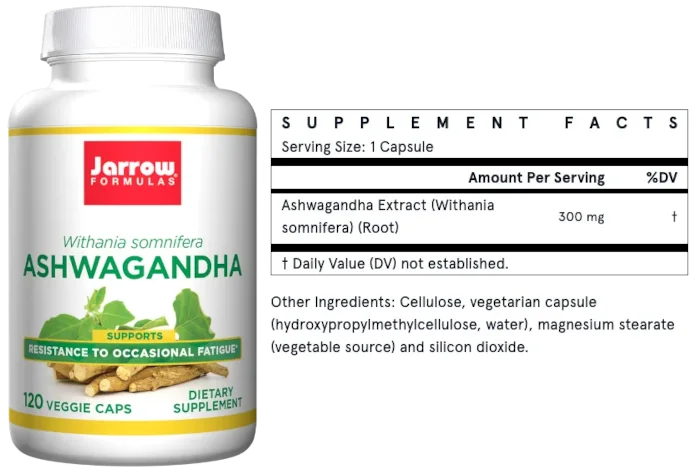
Magnesium L-Threonate
As mentioned above, Peter chooses to take a form of Magnesium in the evening which can cross the blood-brain barrier; L-Threonate.
He takes 2 capsules per evening.
Brands of L-Threonate include:
- Jarrow – Magnesium L-Threonate – 90 x 144 mg servings (see 20% off coupon code)
- NOW – Magnesium L-Threonate – 90 x 144 mg servings (see 20% off coupon code)

Maintaining Cognitive Function
During Peter’s AMA #46 he discusses Alzheimer’s disease and methods to preserve cognitive function into older age.
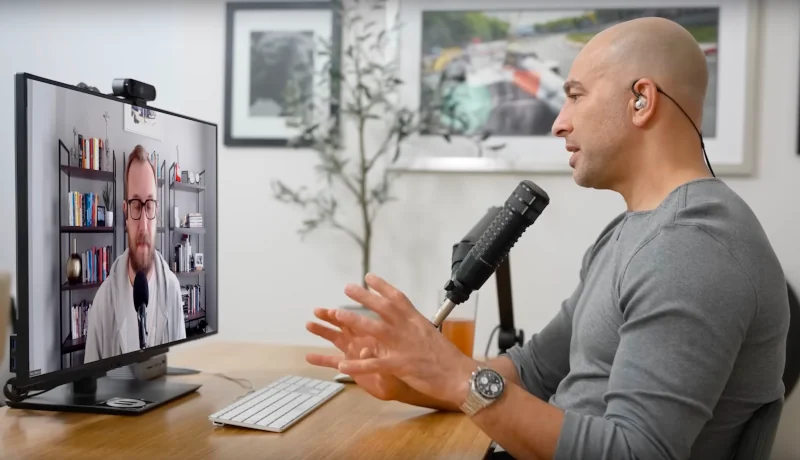
As part of this he discusses 3 supplements:
- A Curcumin extract called Theracurmin (6 out of 10 rating*)
- Cocoa extract (no rating given* – but suggests it may benefit those with insulin resistance or hypertension the most)
- Magnesium L-Threonate (2 out of 10 rating*)
* Peter notes in the podcast the rough ratings his team have given each of these supplements, in the context of preserving or improving cognitive function.
Of these, Peter says he takes 2; Theracurmin and Magnesium L-Threonate.
We’ve already discussed L-Threonate above, so we’ll just focus on the Theracurmin below.
Briefly, regarding cocoa extract, Peter discusses 3 studies, all involving elderly people, which showed cognitive benefits at a dose of 500 mg and upwards per day:
An example of a high-quality cocoa extract is Cocoavia which comes in 500 mg and 750 mg versions. For 15% off, use this coupon code.
Rhonda Patrick is a fan of this brand, in part due to its ultra-low heavy metal content, which can be an issue with cocoa products. I’ve written more about it here.
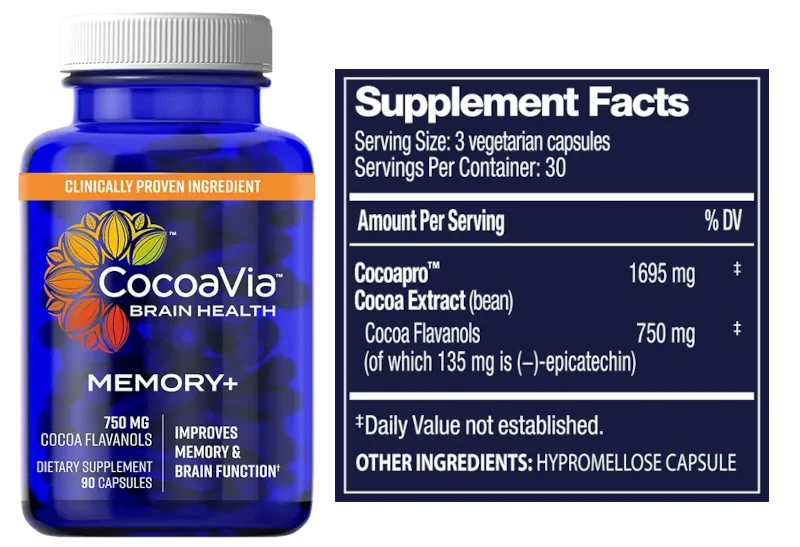
Theracurmin
Peter’s team gives Theracurmin the highest score (6 out of 10) for evidence and says you can make the case for patients who have inflammation or maybe even patients who are in the earliest stages of mild cognitive impairment (MCI).
He cites two studies that he found particularly convincing. The first was an 18-month study of 40 subjects, without dementia, where half took 90 mg of Theracurmin 2x per day (180 mg total), and the other half placebo.
The Theracurmin group showed improvements in memory and attention scores, in tandem with brain imaging that showed decreases in amyloid and tau accumulation in brain regions modulating mood and memory.
The second study he mentions looked at patients with Alzheimer’s disease and mild cognitive impairment (MCI). They took 180 mg per day, and their cognitive function largely remained stable (n = 36), versus the placebo group (n = 57) who noticeably continued their decline.
In terms of what Theracurmin actually is… It is a more bio-available form of curcumin, the main active ingredient in turmeric.
Curcumin’s mechanisms of action include:
- Anti-inflammatory
- Antioxidant properties
- Amyloid-beta plaque reduction
- Neurogenesis promotion
- And more! It’s a compound that effects a lot of different biological pathways.
More research is needed to confirm which of these mechanisms are primary in relationship to brain health.
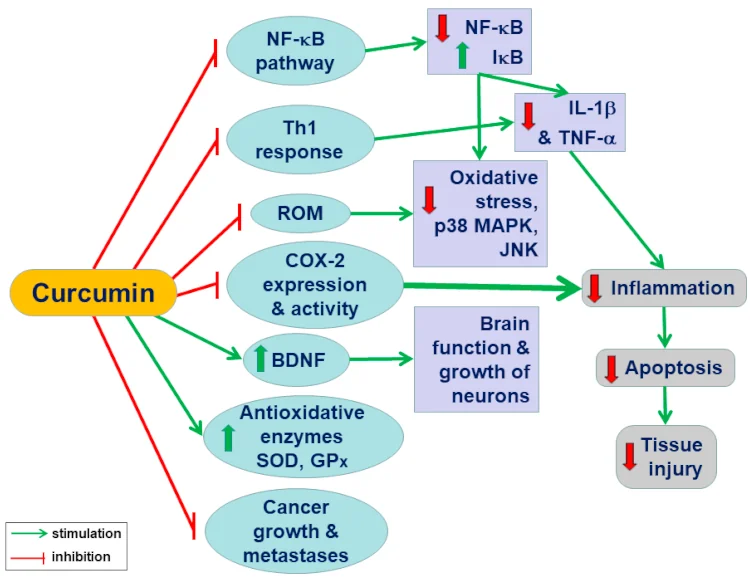
^ Mechanisms of curcumin – image source
Theracurmin is a patented formula, and the marketing quotes 27x more bioavailability than standard curcumin. This is apparently achieved by shrinking the particle size and then combining it with a gum called “gum ghatti”.
This study (especially if you can get the full paper) gives more insight into the creation and properties of Theracurmin.
My personal take is that there are multiple methods of increasing the bioavailability of curcumin, some more expensive than others. Peter has gone with the type that has the best clinical evidence in his view, which makes sense. However, it’s expensive, and unlikely to hold the monopoly on these beneficial effects.
For example, see table 1 of this article, which examines other curcumin formulations and the number of studies they’ve been used in.
Peter didn’t mention the exact dose, frequency or brand of Theracurmin he takes. However, we know the two studies cited used either 90 or 180 mg daily, with 180 mg being a high dose.
Types of Theracurmin include:
- Natural Factors – Theracurmin – 30 mg per capsule (see 20% off coupon code)
- Natural Factors – Theracurmin – 60 mg per capsule (see 20% off coupon code)
- Source Naturals – Theracurmin – 60 mg* per capsule (see 20% off coupon code)
* Note that Source Naturals markets the product as 600 mg, but my understanding is that it actually yields 60 mg of curcumin per capsule – which is a lot less, and thus misleading marketing.
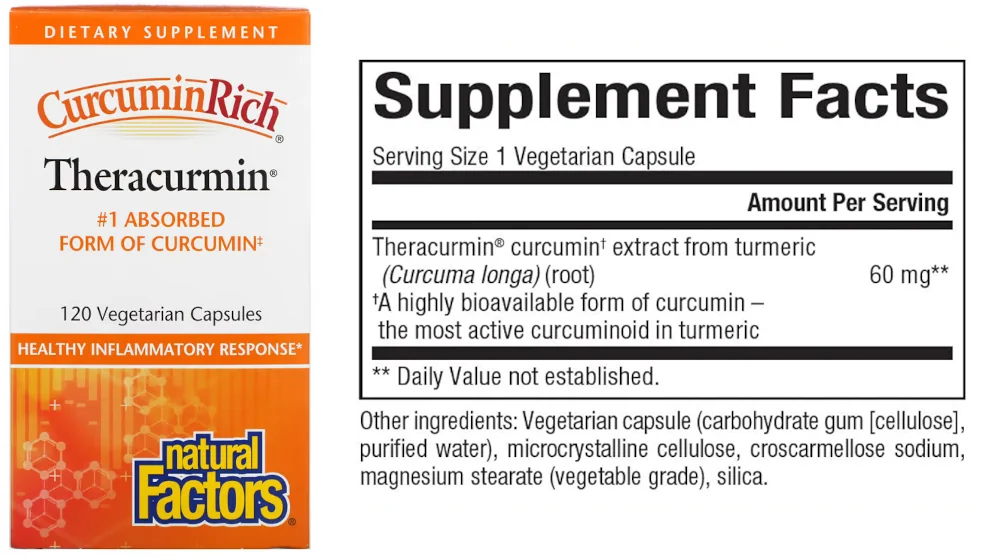
Prescription Drugs
Rapamycin

Peter first announced on a 2018 podcast with Kevin Rose that he had started taking Rapamycin (see approx. 52m 15s of the podcast).
Dose: According to his October 2023 interview (see 2:41:16) he’s currently taking 8 mg once per week.
He notes that it’s important to take it in pill form, due to the enteric coating that gets the rapamcyin past the stomach acid and absorbed via the intestines. Saying that compounded versions may not have this enteric coating.
In terms of unwanted side effects, Peter notes that it gives him occasional aphthous ulcers. He also notes that his fingernails grow slower whilst taking it. Besides that, he doesn’t notice any other day-to-day differences from the drug.

About Rapamycin
Rapamycin is a prescription drug that is FDA-approved for use as an immunosuppressor. When taken daily, it stops the bodies of transplant patients from rejecting their new organs.
The use of rapamycin for healthspan/lifespan benefits is off-label and does not have FDA backing (yet).
The reason for the interest in rapamycin for healthspan/lifespan benefits derives primarily from success in labs, where it has been able to extend the lifespan in animal models (fruit flies, worms, and mice).
^ All 4 audio clips on Rapamycin come from this Tim Ferris interview
Despite this potential, there haven’t been any studies of its lifespan/healthspan benefits in humans yet. Two potential reasons are:
- Rapamycin isn’t under a patent.
- The FDA do not recognize aging as a disease, meaning you’d have to prove rapamycin is effective at tackling a specific disease.
That said, in recent years, there has been substantial interest in the use of rapamycin to tackle aging. Thus it’s likely studies in humans will take place in the coming years.
Pregabalin & Trazodone

In this section, we’ll explore the 2 prescription drugs that Peter mentioned using for sleep in his AMA #42.
Peter explicitly says that he doesn’t want people to immediately copy his sleep molecule routine.
This is because Peter has the privilege of consulting with experts like Matthew Walker, and utilizes sleep studies (via polysomnography) in order to figure out what works best for him. However, what works best for him may not be optimal for you or others.
The two prescription drugs Peter uses for sleep are:
- Pregabalin – 100 milligrams
- Trazodone – 50 milligrams
He takes these 2 compounds (along with his 3 different sleep supplements) 8.5 hours before he plans to wake up.
Below we’ll look in detail at these compounds and why Peter uses them. However, broadly speaking, Peter uses pregabalin to increase his stage 3 sleep (non-REM deep sleep), which sleep studies suggested he was lacking in. Then he uses trazodone to decrease the amount of times he wakes up, notices, and then falls back to sleep.

Another reason that Peter warns against copying his sleep routine is that pregabalin and trazodone can interact negatively if taken with other drugs or alcohol.
For example, pregabalin has the potential for respiratory depression, and thus it should not be combined with any other medications that can cause respiratory depression (such as benzodiazepines or opiates).
For further drug interactions with pregabalin see the interactions list and notes before taking.
Similarly, see the interactions list and notes before taking trazodone, because there is a lot to be aware of.
Pregabalin
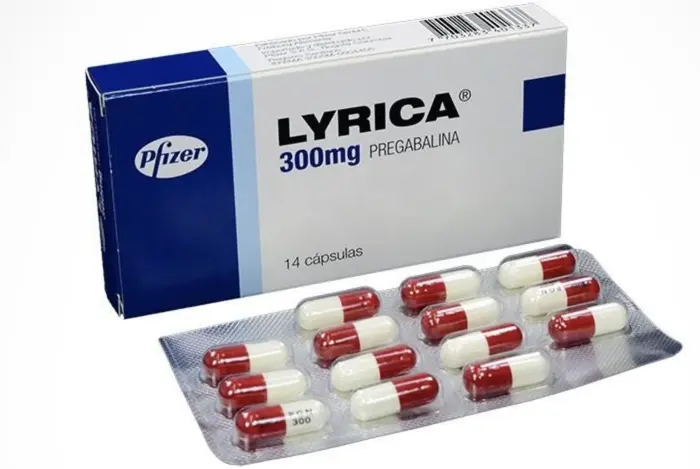
Pregabalin is a prescription medication, sold under the brand name Lyrica, mainly used for neuropathic pain management.
The US Food and Drug Administration (FDA) approved the medication to treat neuropathic pain in diseases like diabetes, spinal cord injury, and epilepsy. Studies also show its benefits for managing anxiety, insomnia, and chronic pain2Pregabalin | Aaron L. Cross et al. | 2023 | StatPearls.
Pregabalin’s mechanism of action is interesting because it came as a surprise to the creators. It has GABA in the name, and initially it was intended to be a GABA analog. However, according to this paper, it primarily functions by reducing the quantity of nerve communication (inhibiting cellular calcium influx and attenuating neurotransmission). In effect, it reduces the overall “chatter” between nerves.

This aligns with the observation that pregabalin operates by dampening overactive neural activity, often triggered by damage to neurological structures3Pregabalin as a Pain Therapeutic: Beyond Calcium Channels | Sascha R. A. Alles | 2020 | Frontiers in Cellular Neuroscience. A prime example is how diabetes can result in neuropathic pain in the spine; in such situations, pregabalin assists by diminishing the intensity of pain signals relayed to the brain.
A benefit of pregabalin’s mechanism is that it doesn’t primarily bind to dopamine, serotonin, or opiate receptors, interactions with which could lead to addiction.4Does Pregabalin Have Neuropsychotropic Effects?: A Short Perspective | David M. Marks et al. | 2009 | Psychiatry Investigation.
Pregabalin and sleep
Pregabalin mediates the intensity of neuropathic signals, which can influence one’s sleep cycles5Sleep and Pain Management: A Review | Adam Woo et al. | 2020 | Pain Management.

Peter discovered, using sleep studies (specifically polysomnography), that he was short on what’s called non-REM deep sleep (stage 3 of the sleep cycle).
Aware of a small 24 person study6A Double-Blind Study in Healthy Volunteers to Assess the Effects on Sleep of Pregabalin Compared with Alprazolam and Placebo | Ian Hindmarch et al. | 2005 | Sleep that found pregabalin increased stage 3 of sleep versus placebo, Peter began taking it.
Peter’s Dose: 100 mg taken at night, 8.5 hours prior to his desired wake time.
Note: Before including pregabalin for sleep improvement, one must consult with their healthcare provider. There are many health conditions for which pregabalin could interact with. Some of these are listed in these notes before taking.
Trazodone
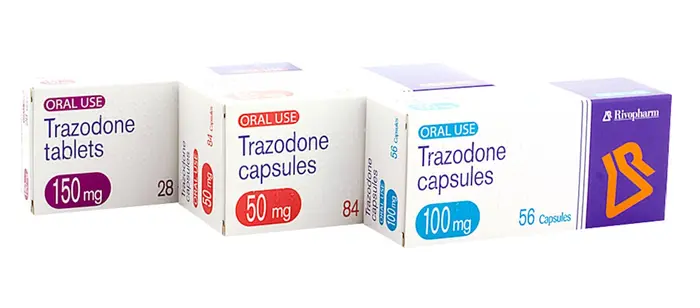
Trazodone is an antidepressant that received FDA approval for the treatment of depression in 1981, over 40 years ago7A Review of Trazodone Use in Psychiatric and Medical Conditions | Hani Raoul Khouzam | 2017 | Postgraduate Medicine.
While it was popular in its early days, trazodone is less commonly used today compared to more modern Selective Serotonin Reuptake Inhibitors (SSRIs).
Unlike typical SSRIs, trazodone not only inhibits the reuptake of serotonin but also acts as a serotonin receptor antagonist, meaning it blocks certain serotonin receptors.
According to Peter, one of the side effects of trazodone is drowsiness. As a result, when newer and more specific antidepressants were developed, many clinicians moved away from prescribing trazodone as a first-line treatment for depression.
Trazodone and sleep
The most common use of trazodone, aside from depression treatment, is for sleep improvement.
Peter describes Trazodone as one of the exceptional drugs capable of improving sleep architecture in chapter 16 of his book Outlive: The Science and Art of Longevity.
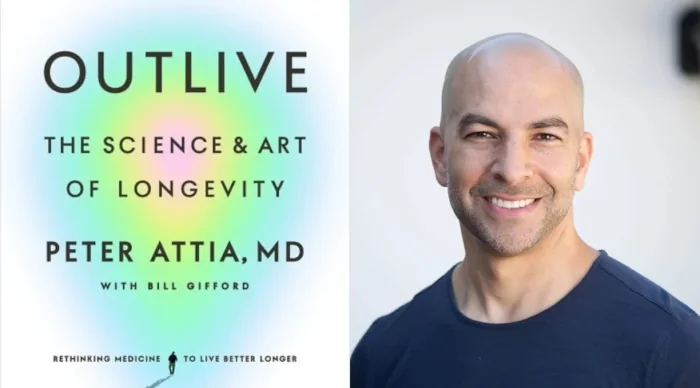
In this context, sleep architecture refers to the various quantities and proportions of sleep stages that people access during sleep.
According to a 2022 meta-analysis of trazodone8Trazodone Changed the Polysomnographic Sleep Architecture in Insomnia Disorder: A Systematic Review and Meta-Analysis | Yongliang Zheng et al. | 2022 | Scientific Reports, studies show that total sleep time is increased. Specifically it:
- Increased total sleep time by an average of 40 minutes
- Increased the amount of non-REM deep sleep
- Reduces the number of nighttime awakenings
This is of particular interest to Peter, who had noticed he had many wake-ups that he perceived as well as wake-ups that he did not perceive. He says that trazodone reduced the number of perceived wake ups (but non-perceived wake-ups still happen).
Peter says in AMA #42 that he has been using trazodone for the last three years. Initially, he was taking 100 mg per night, however, he found with that dose it sometimes took him 30 minutes to wake up in the morning. Later, with the introduction of pregabalin he decreased his trazodone dose to 50 mg.
Peter’s Dose: 50 mg of trazodone taken at night, 8.5 hours prior to his desired wake time.
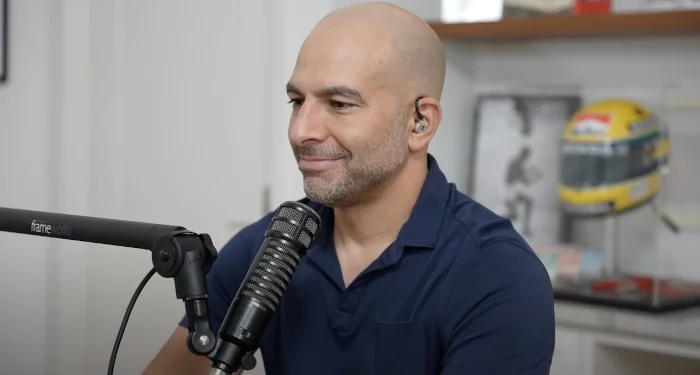
Trazodone, like pregabalin, requires regular use to benefit from the effects on one’s sleep.
One should consult their healthcare provider before including trazodone in their sleep improvement kit. Trazodone can interact with many health conditions, some of which are listed in these notes before taking.
Ezetimibe, Rapatha & Bempedoic acid
Peter has experimented with a number of different drugs to reduce cardiovascular disease risk in the past. For example:
- In his 2018 AMA #2 he mentioned taking Atorvastatin and Ezetimibe.
- In his October 2020 podcast (see 1h 48m) he was taking a low dose of Pravastatin and a PCSK9 inhibitor.
Now, according to his October 2023 interview (see 2:29:48) he’s currently taking:
- Ezetimibe – which lowers circulating levels of cholesterol
- Rapatha – a monoclonal antibody that inhibits PCSK9 to reduce LDL-C
- Bempedoic acid – it blocks a liver enzyme responsible for making cholesterol, to lower LDL-C
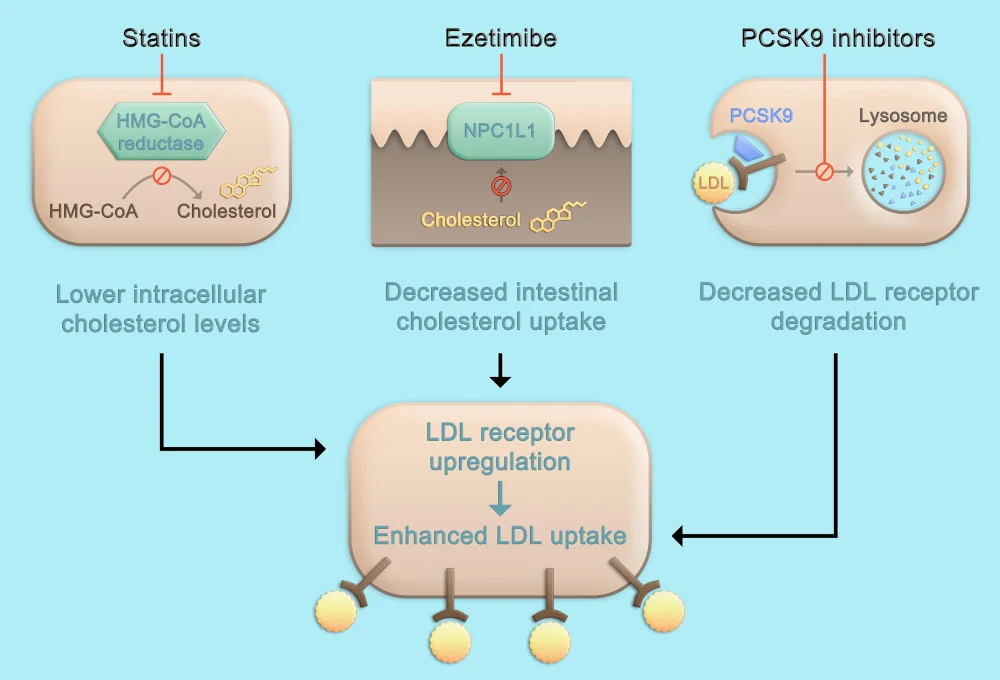
SGLT-2 Inhibitor

In a September 2023 video with Andrew Huberman, Peter mentioned that he takes an SGLT-2 inhibitor (see 1:14:56). Examples include Canagliflozin and Empagliflozin, but he didn’t mention the specific one he’s using in that interview.
SGLT-2 inhibitors block the re-uptake of glucose so that more glucose is excreted in the urine.
An SGLT-2 inhibitor called Canagliflozin was tested (study link) in the Intervention Testing Program (ITP) and they found that it extends life span in genetically heterogeneous male but not female mice.
For context, the phrase genetically heterogeneous just means that the mice have a diverse genetic background, as opposed to mice that have been bred to have nearly identical genetics (also phrased as “genetically homogeneous”). Study results may be more applicable to other organisms, like humans, if there is genetic diversity in the test group.
Specifically, Canagliflozin increased the median lifespan in the male mice by 14%, with a maximum extension of 9%. However, it had no effect on the females.
Further Notes
Brands Peter likes
Supplement brands Peter says he likes are (source AMA 36):
- Thorne
- Jarrow
- Nature’s Way
- Pure Encapsulations
For Omega-3 fish oils he likes (source: 54m 30s of #83):
- Carlson
- Nordic Naturals
Peter’s Approach to Multivitamins
Peter personally avoids multivitamins, instead favoring a more targeted approach.
His concern is that they can sometimes contain too much of ingredients you don’t need, and not enough ingredients you do need.
That being said, he appears to make an exception for Athletic Greens AG1, which contains a large amount of vitamins and minerals.
Roundup & Further Reading
Hopefully, this article has been useful. I maintain a change log if you’d like to view the changes to it over time.
Please leave any questions or comments below.
If you’ve enjoyed this post, you may also like:
- Peter Attia’s Diet – What he eats & why
- Peter Attia’s Top 5 Most Important Blood Tests
- Andrew Huberman Supplements – Deep dive into what he takes & why
- David Sinclair Supplements – what the Harvard anti-aging professor takes & why
References
- 1Homocysteine and Cardiovascular Disease | Refsum, H. et al. | 1998 | Annual Review of Medicine
- 2Pregabalin | Aaron L. Cross et al. | 2023 | StatPearls
- 3Pregabalin as a Pain Therapeutic: Beyond Calcium Channels | Sascha R. A. Alles | 2020 | Frontiers in Cellular Neuroscience
- 4Does Pregabalin Have Neuropsychotropic Effects?: A Short Perspective | David M. Marks et al. | 2009 | Psychiatry Investigation
- 5Sleep and Pain Management: A Review | Adam Woo et al. | 2020 | Pain Management
- 6A Double-Blind Study in Healthy Volunteers to Assess the Effects on Sleep of Pregabalin Compared with Alprazolam and Placebo | Ian Hindmarch et al. | 2005 | Sleep
- 7A Review of Trazodone Use in Psychiatric and Medical Conditions | Hani Raoul Khouzam | 2017 | Postgraduate Medicine
- 8Trazodone Changed the Polysomnographic Sleep Architecture in Insomnia Disorder: A Systematic Review and Meta-Analysis | Yongliang Zheng et al. | 2022 | Scientific Reports


